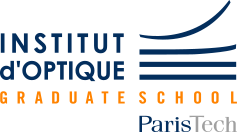CO2Optical design with Zemax®-OpticStudio - Advanced
Level: Advanced
Audience:
Technician, engineer, researcher, teacher, PhD student: anyone who designs a complex optical system (for example, 8 or 10 lens imaging lenses)
Prerequisites:
Basic knowledge in physical optics and optical design with Zemax®
Language of the training: French
Maximum capacity: 10
Price: 1820 € HT -
Duration: 4 days - 28 h
Objectives
- Be able to design and / or analyze a complex optical system
- Know how to use Zemax-OpticStudio in sequential and non-sequential mode
- Know how to analyze a specification. Know the methods of optical design

Addressed topics
Sequential mode: optical aberrations, design methods, specification analysis
Non-sequential mode: sequential/non-sequential correspondence, realization of a lighting component with LED source (collimator or guide)
The program
Reminders in optical design (1/2 day)
- Geometrical Optics Recalls
- Optical Aberrations
Sequential mode: studies of 2 complex video objectives and a system with variable focal length (2.5 d)
- Projection objective: to know in which direction to study an optical combination and how to choose the parameters of field, opening, spectral band to fill the specifications. Learn the aberration correction rules during system optimization: influence of refractive indices, role of the pupil with regard to primary and secondary chromatic aberrations, influence of sinus condition...
- Video lens for robotics: determining focal and aperture characteristics from specifications that do not mention them. Then set up an optical combination from simple constituent elements knowing the preceding characteristics. Optimization of the system thus built to meet specifications
- Variable focal length system: discovery of the different existing systems: for projection, for shooting, with 2 or more elements, with optical compensation or with mechanical compensation, and formulation of the positioning of the elements. Set up and optimization of a report zoom 4x by using only optical Edmund Optics catalog.
Non-sequential mode: applications to lighting and non-imaging optics (1 d)
- Sequential / Non-sequential correspondence in Zemax / Opticstudio:
- implementation of a pure non-sequential model, corresponding software calculation options
- logic of the construction of the geometric model in non-sequential (Nesting rules, solves)
- Application to non-imaging optics: study of the realization of an optical component with commercial LED source:
- source models, manufacturer data usage
- addition of detectors to qualify the behavior of the model
- description of the optimization logic (merit function operators) and tolerancing (operators and nesting rules) of the resulting system
Methodology and assessment
Lectures
Hands on with Zemax-OpticStudio®
Pedagogical manager(s):
- Thierry Lépine - Professor at Institut d'Optique
All trainings:

